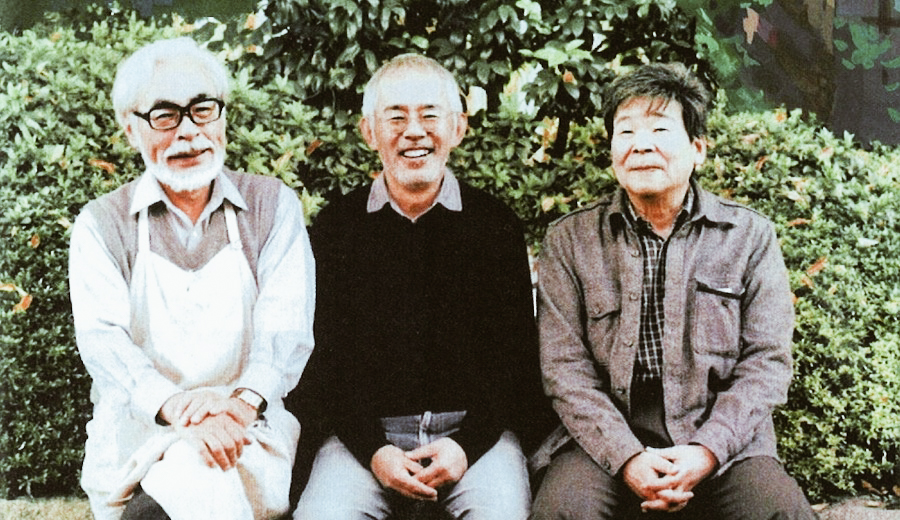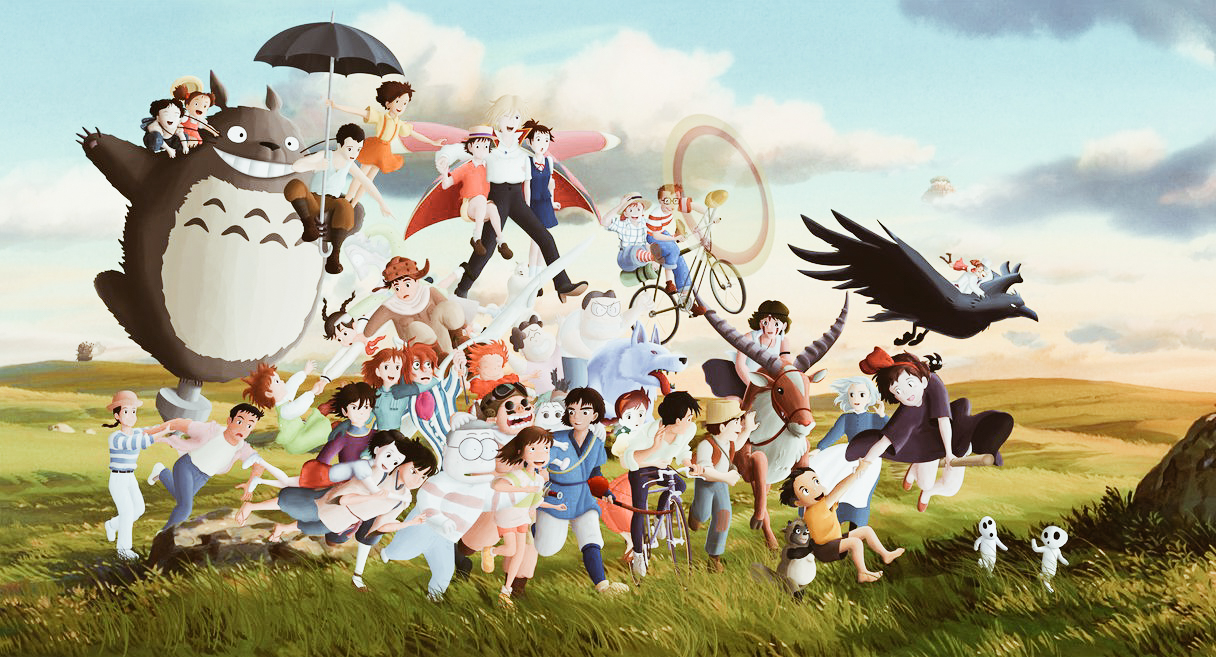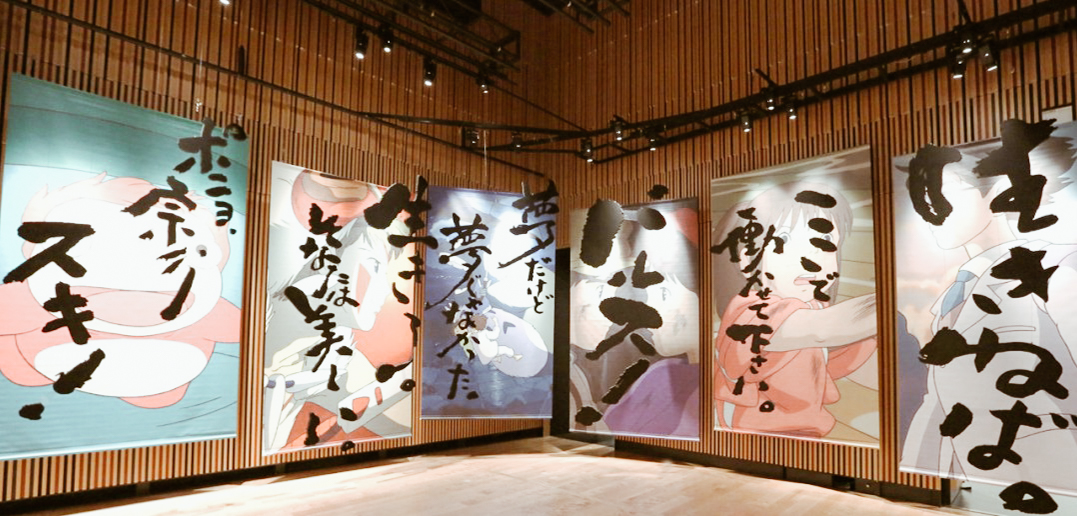Japan Modern Culture: Studio Ghibli

photo credits: ghibli.jp
Alzi la mano chi non si è innamorata di Howl, lo stregone con il suo castello errante, o che non ha provato tenerezza per Kaonashi, il Senza Volto de “La Città Incantata”… Se anche voi siete tra coloro che amano le produzioni dello Studio Ghibli, allora vi trovate nel posto giusto!
Il Vento Caldo del Deserto
15 giugno 1985: Hayao Miyazaki, Isao Takahata, Toshio Suzuki e Yasuyoshi Tokuma decisero di fondare 株式会社スタジオジブリ ovvero lo Studio Ghibli Inc. il cui nome fu scelto proprio da Miyazaki con l’intenzione di “creare una tromba d’aria nel mondo dell’animazione giapponese”. Le radici affondano nella passione per l’aviazione del regista e sceneggiatore nipponico, infatti “Ghibli” non è solo il vento caldo del deserto del Sahara ma, durante la seconda guerra mondiale l’aereo da ricognizione italiano Caproni Ca.309 era soprannominato proprio “Ghibli”. Curioso, non è vero?
All’inizio nessuno pensava che il progetto sarebbe arrivato al grande successo, perciò per ridurre al minimo il rischio del fallimento, furono impiegati 70 animatori a tempo determinato e la sede dello studio consisteva in un ufficio di 90 metri quadrati a Kichijoji, Tokyo.

photo credits: sgcafe.com
Un successo dietro l’altro
Lo Studio Ghibli iniziò la propria produzione ufficiale con “Laputa – Il castello nel cielo”, “Il mio vicino Totoro” e “Una tomba per le lucciole”, tre perle d’animazione acclamati dalla critica, ma che all’inizio non riscossero lo stesso successo accumulato nel tempo.
Fu “Kiki – Consegne a domicilio” che ottenne grandi risultati nel 1989 diventando il successo dell’anno al botteghino giapponese. Questo permise di introdurre i contratti a tempo indeterminato all’interno della produzione e ad assumere nuovo personale. Oramai lo Studio contava quasi 300 persone al suo interno e si cominciò a pensare ad una nuova sede proprio durante la produzione di Porco Rosso, la cui qualità non fu eccelsa proprio a causa dell’affollamento in ufficio.
Nel 1992 il nuovo studio, la cui realizzazione fu seguita in prima persona da Miyazaki che ne disegnò l’aspetto finale, fu pronto. Finalmente avvenne il passaggio a Koganai (Tokyo). La computer-generated imagery (CGI), che permette ad un’immagine bidimensionale digitalizzata di essere gestita in ogni tipo di vista tridimensionale, venne introdotta con “Pom Poko”.
Nel 1994 e nel 1995 fu distribuito “I Sospiri del mio Cuore” e, sul finire degli anni ’90 e i primi anni 2000, lo Studio Ghibli appose la sua firma sui capolavori più amati, raggiungendo il successo meritato anche in occidente: Princess Mononoke (1997), La città incantata (2001) e Il castello errante di Howl (2004), diretti da Hayao Miyazaki.
Il 2006 fu il turno di Gorō, figlio di Miyazaki, a dirigere il film I racconti di Terramare e, due anni dopo, lo Studio Ghibli divenne l’unico studio di animazione giapponese ad usare esclusivamente tecniche di disegno tradizionali per le proprie produzioni.
Purtroppo, nel 2013, in occasione della la 70ª Mostra internazionale d’arte cinematografica di Venezia, a seguito della presentazione del 19° film di animazione marchiato Studio Ghibli “Si alza il vento” (The Wind Rises), venne annunciato il ritiro dalle attività cinematografiche di Miyazaki, con conseguente dispiacere dei fans. Il produttore disse che la sua avanzata età non gli permetteva più di seguire le lunghe realizzazioni dei suoi film e così, l’8 novembre 2014 l’Academy gli conferì l’Oscar alla carriera.
Il 2015 fu un anno strano per lo Studio Ghibli: Hiromasa Yonebayashi, regista di “Arrietty – Il mondo segreto sotto il pavimento” e di “Quando c’era Marnie” lasciò la produzione. Durante una conferenza a Tokyo, Miyazaki annunciò il suo impegno in un nuovo progetto la cui produzione avrebbe potuto richiedere più di cinque anni di lavorazione. Infatti, nel 2017, attraverso un’intervista al produttore Toshio Suzuki, si venne a sapere che il nuovo lungometraggio sarebbe stato un adattamento del romanzo giapponese del 1937 “Kimi-tachi wa do ikuruka?” di Genzaburo Hoshino.
Non ci resta che attendere quali sorprese ci regaleranno anni di esperienza e passione!

photo credits: tokyotreat.com
Museo Ghibli
Raggiungibile con la linea JR Chuo per la deliziosa cittadina di Mitaka, il museo presenta una varietà di stanze che mescolano lo stile vintage allo steampunk traboccanti di riferimenti al folklore e alla quotidianità giapponese. All’interno esiste anche un cinema dove vengono proiettati cortometraggi inediti di circa 15 minuti.
Inoltre, in diversi periodi dell’anno, vengono allestite esibizioni speciali per periodi limitati di tempo. Procurarsi i biglietti per il Museo non è facile poichè non sono venduti in sede. E’ ecessaria la prenotazione parecchio tempo prima attraverso le biglietterie Lawson online o nei minimarket Lawson presenti sul territorio Giapponese, oppure in biglietterie specifiche all’estero dove i biglietti sono messi a disposizione solo per 4 mesi all’anno.
Per ogni informazione specifica e per tutti gli aggiornamenti, potete controllare il sito ufficiale, disponibile anche in lingua inglese qui: http://www.ghibli-museum.jp/en/

photo credits: forbes.com
Mostra dello Studio Ghibli a Tokyo
La “Toshio Suzuki and Studio Ghibli Exhibition”, la prima mostra dello Studio dopo 3 anni presso il centro di scambio culturale EDOCCO, Tempio di Kanda Myojin a Tokyo. Inaugurata il 20 aprile e in corso fino al 12 maggio, è una tappa obbligatoria per chiunque voglia essere catapultato nell’incantevole mondo Ghibli. Si possono ammirare le illustrazioni e documentazioni che rivelano il dietro le quinte delle trame e dei processi produttivi dei suoi capolavori dalla sua fondazione sino ad oggi.
E’ disponibile anche un ampia zona dedicata al merchandise, tra cui speciali ema e omamori creati in collaborazione con il tempio stesso. Gli appassionati troveranno anche dei menù a tema all’ EDOCCO café come ad esempio il “Makkuro na kuro goma ohagi no ocha set” in omaggio ai Nerini del Buio (Makkuro Kurosuke) o il “Tonari no Kakigori” ispirato al Mio Vicino Totoro.
E’ possibile acquistare i biglietti per la mostra sia in sede che online al costo di 1,300¥ per adulti e 800¥ per gli studenti. Sito ufficiale: https://ghibli-suzuki.com/

photo credits: amu-zen.com
Condividi:
- Fai clic per condividere su Facebook (Si apre in una nuova finestra)
- Fai clic qui per condividere su Twitter (Si apre in una nuova finestra)
- Fai clic qui per condividere su Tumblr (Si apre in una nuova finestra)
- Fai clic qui per condividere su Pinterest (Si apre in una nuova finestra)
- Fai clic per condividere su Telegram (Si apre in una nuova finestra)
- Fai clic per condividere su WhatsApp (Si apre in una nuova finestra)
- Fai clic qui per condividere su Reddit (Si apre in una nuova finestra)
- Fai clic qui per stampare (Si apre in una nuova finestra)






